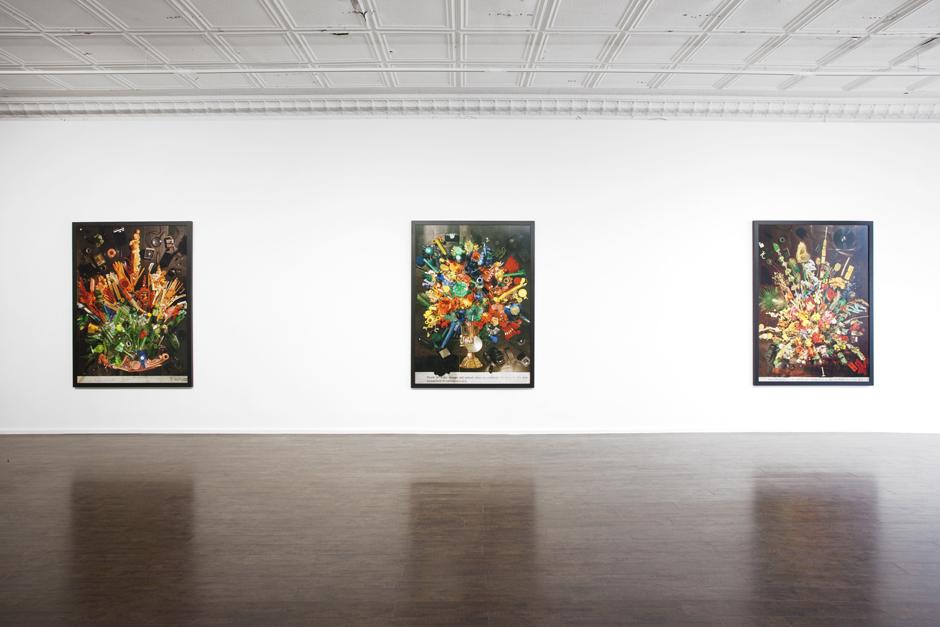“Conceptual kitsch” might be the only adequate term to describe the work of artist Sara Cwynar. Born in Vancouver and raised in Ottawa, she studied design at Toronto’s York University and English at Vancouver’s University of British Columbia before relocating to New York and working as a graphic designer for the New York Times Magazine. Cwynar left the magazine earlier this year to work full-time on her art, the product of which is currently on view in Toronto at Cooper Cole.
Cwynar’s newest body of photographic work, Flat Death (2013), consists of careful arrangements of objects and images that the artist has then rephotographed.
The west side of the gallery is anchored by three such large-scale studies of floral arrangements. An evolution of Cwynar’s earlier Color Studies series (2012), these Contemporary Floral Arrangement works are composed of groupings of objects organized by colour atop enlarged photographs depicting flower-arranging techniques.
The bouquets in these prints bloom with the debris of everyday life: spools of thread, golf tees, paper clips, fancy toothpicks and more. Up close, each arrangement of items resembles the cluttered pages of an I Spy book. However, with slightly more distance, it becomes apparent that each component has been carefully placed upon reproductions of petals, pistils and leaves, following the contours of the image below.
A self-professed “hoarder,” the artist maintains a comprehensive and growing archive of objects, photographs and other ephemera that she describes as a medium or tool in her work. Cwynar’s humour and obsessive collecting impulses, already evident in the floral pieces, are also apparent in another series of 13 photographs. These tightly wrap an interior corner, creating an intimate viewing space that echoes the cloistered self-referentiality of a collector’s stash.
Images culled from Cwynar’s archive are reimagined in abundant, often overwhelming, ways. For the print Continuous Pour (2013), Cwynar appropriated images from photography manuals and stock food photographs as well as from her own previous work Bernardo with Props (2013); she then arranged these into a dizzying meditation on the title action.
Many of the works in the show can be grouped in pairs or trios, provoking viewers to look closely for additional references. Both Toucan In Nature (Post It Notes) (2013) and Gold – NYT April 22, 1979 (Alphabet Stickers) (2013) employ a technique whereby Cwynar enlarges an original archival image, then reprints it on several pages and reassembles it with tape. This collage then becomes a ground for embellishment—in these cases, with Post-it note arrows and gold alphabet stickers, respectively—before being rephotographed. The resulting images are delightfully kitschy and visually pleasing, but also evince the very involved process of their making.
Without subtlety—but with craft and wit—Cwynar invites us to look closely and to question hierarchies of image-making, as well as the changing nature of photography. The title of this body of work references Barthes’s famed phrase on spatial collapse inherent to the medium, while five prints titled Darkroom Manual (2013)—scans of instructional-text images of darkroom equipment—underline oscillations between digital and analog. (The floral works were shot and developed on film before being digitally printed, further signalling a play between different techniques.)
Overall, the works on view invite speculation on the ever-increasing space and time that seemingly disposable stock photographs and ephemera, and the tropes they have propelled, might occupy.









